Week 17:
Applications and Implications ~ Final Project
Topics on this page
1 - What's Fab Academy about? What's our Final Project process about?2 - The Final Project: A Pillow Alarm
- inspirations & research
- presentation of the idea
- timeline
- Sketches
4 - Delineating: answering Neil's questions
The Pillow Alarm
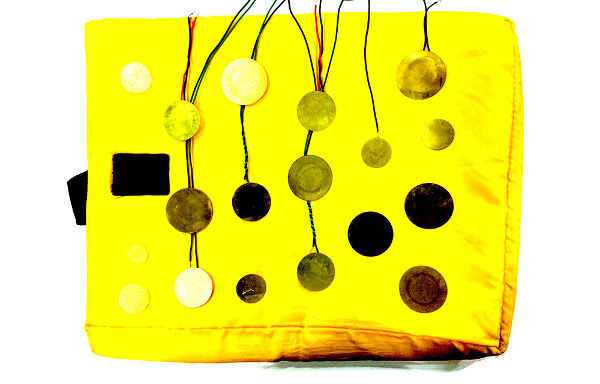
What is the point of the final project of Fab Academy?
- to synthesize and test our learning on a real project
- to see where that idea fails; to learn how to iterate
- Here are some things that Santi has said you are likely to gain in this kind of learning:
- manage your frustration
- move forward even in ignorance
- Here are some key points I've noted:
- open source: one of the key demonstrations of the idea of giving something freely and letting the consequences be undesigned; note: there are various "brakes" on anarchic distribution; "open source" can have qualifications and still be open source (think of Massimo Banzi talking about the Arduino platform in Week One).
- ~ modularity / GIK thinking: design a system that people can put together in their own way for their own use (see lecture notes on Carlo Ratti's talk below ~ his philosophy is centered in this)
- ~ "machines that make machines" means tools that are able to grow their users' power exponentially
- ~ spiral development is the essence of prototyping and means that projects don't fail; they either succeed in moving on to be more complex or not
- ~ blockchain / "trustlessness" ~ I would call this distributed trust. It is keeping financial / economic accounts in the way that GitHub works: many people have a glut of information, which means that the information is secure through its multiplicity / innumerable downloads. I don't get this entirely still, yet, because it seems the legal system is either replaced by a system based in shame ~ which is a great behavior motivator ~ or, if the legal system remains unchanged, then this is a continuation of ever-growing self-administration of our lives (which is tiring! Why did travel agencies have to go the way of the dodo? NOT more convenient!); it's an important idea, because it affects systems, I'm just not sure what it will affect. Trustlessness requires faith.
- Talk To Me, an exhibit curated by Paola Antonelli at MOMA in 2011, remains fundamental. Two nice motifs of her essay:
- minimal shapes with maximum pathos
- radical functionalism
Final Project: the Pillow Alarm
Inspiration / research
- ~ the look:
- Natalie Gourguechon
- Elisa Werbler
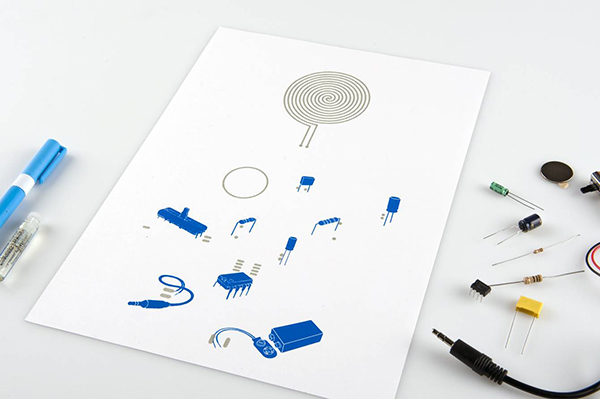
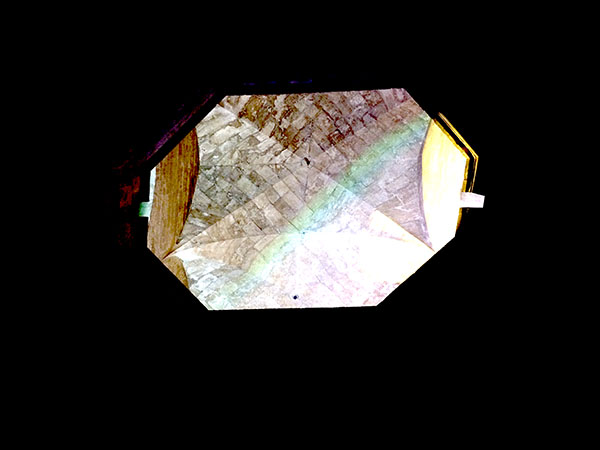
Presentation of the Idea
Active workstation concept has transformed:
Shelf -> Seat -> cushion
Initial presentation on the cushion as a Google Slideshow
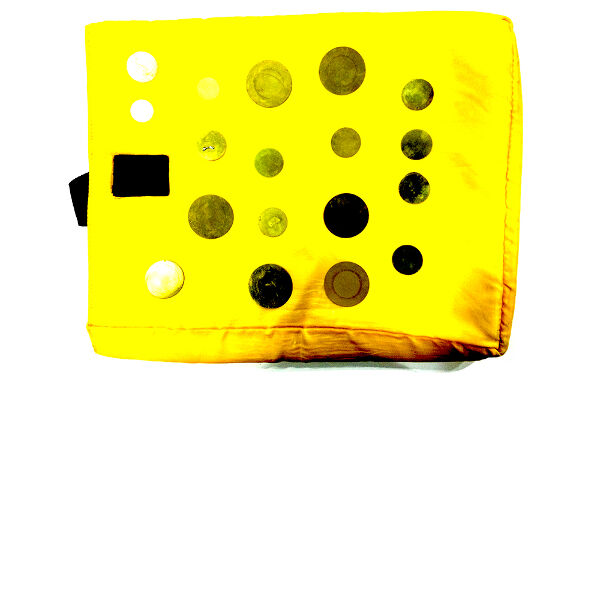
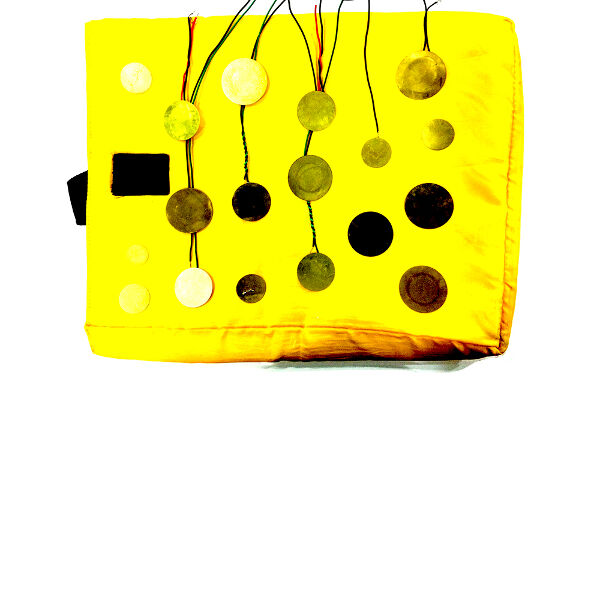
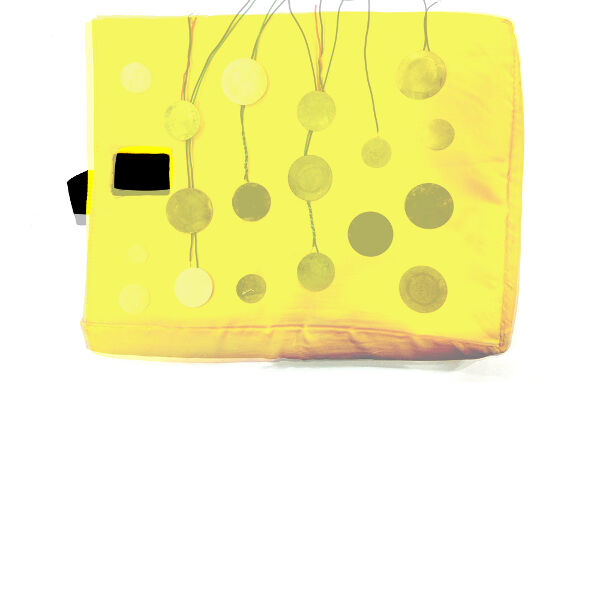
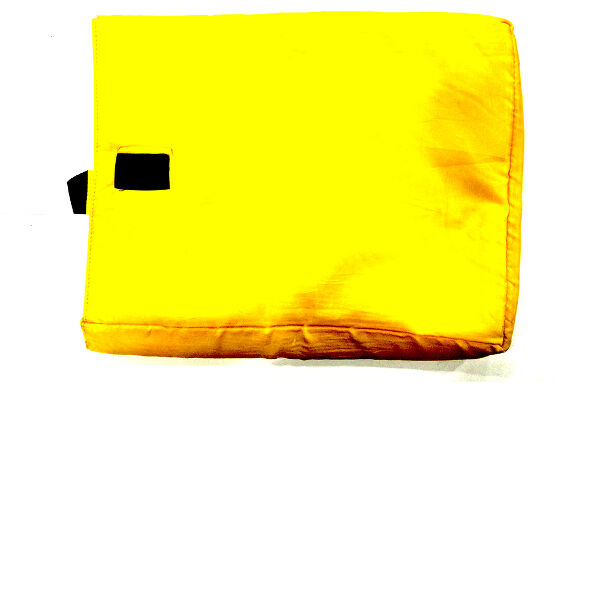
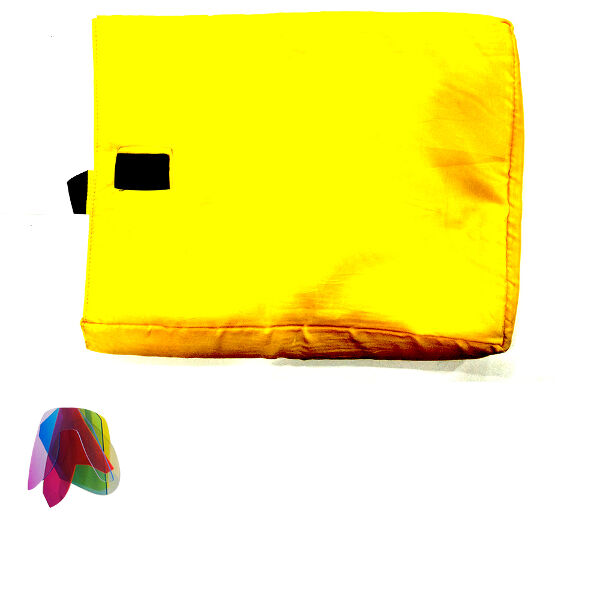
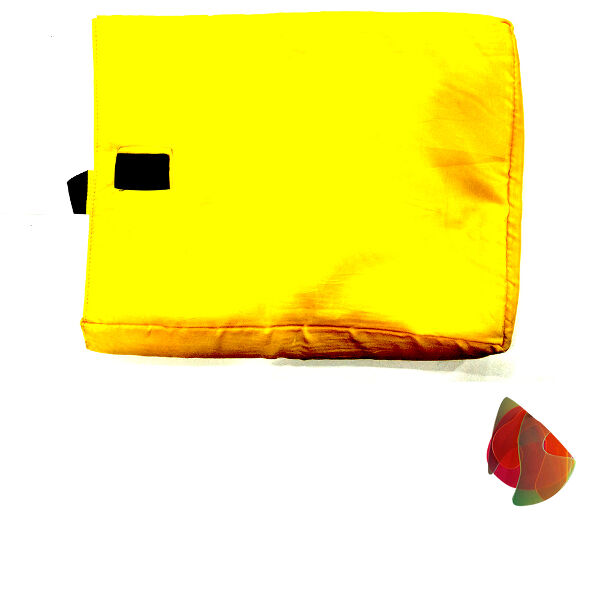
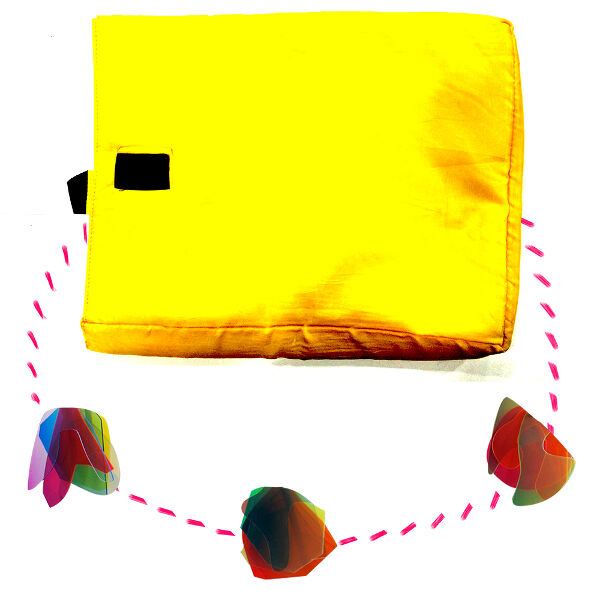
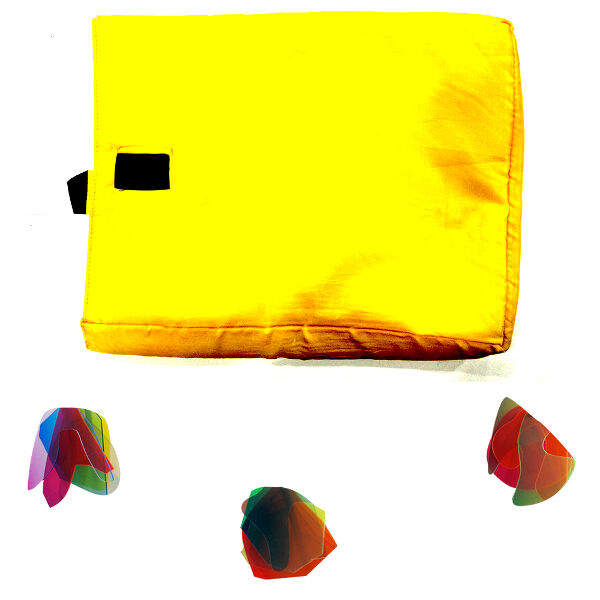



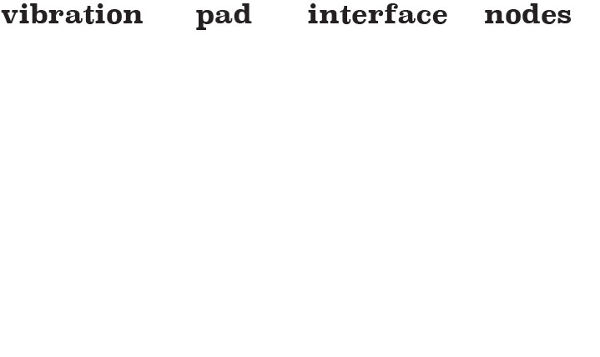
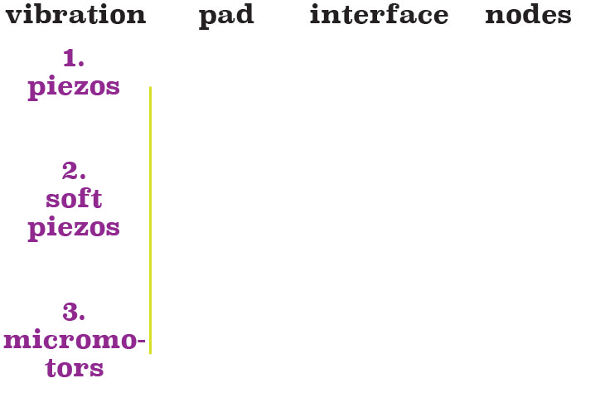
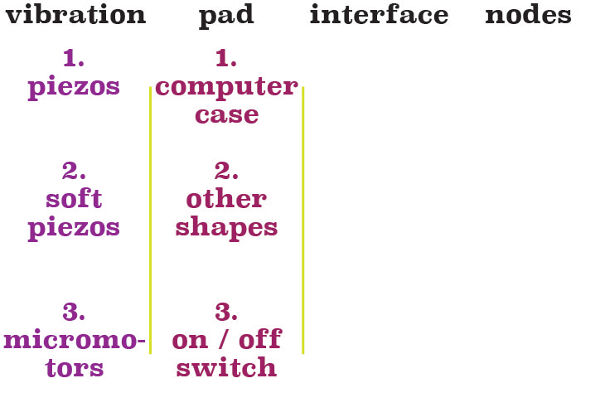
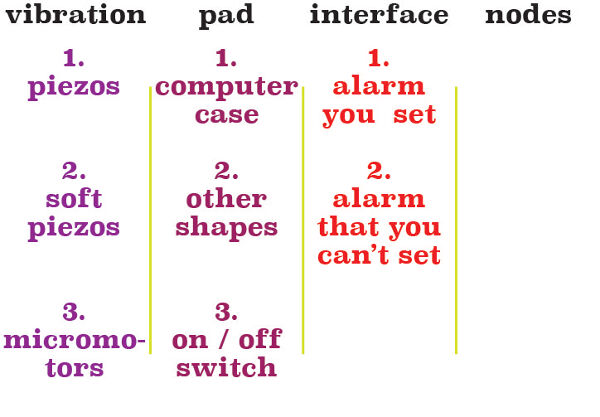
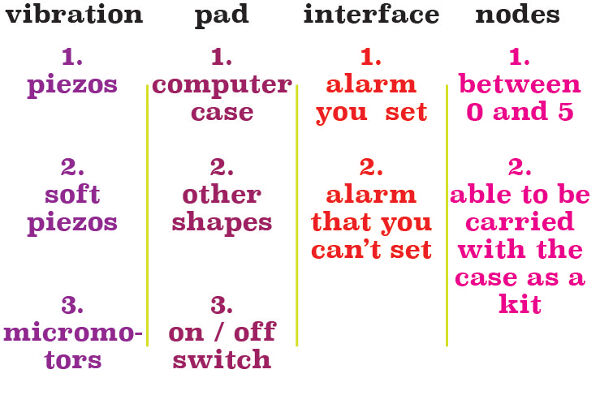
Timeline
Phase I:
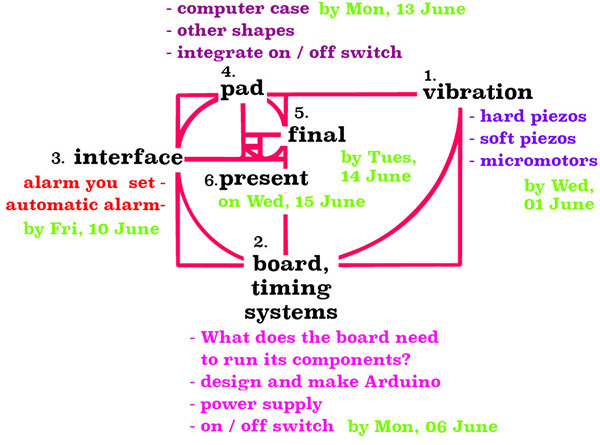
Phase II:
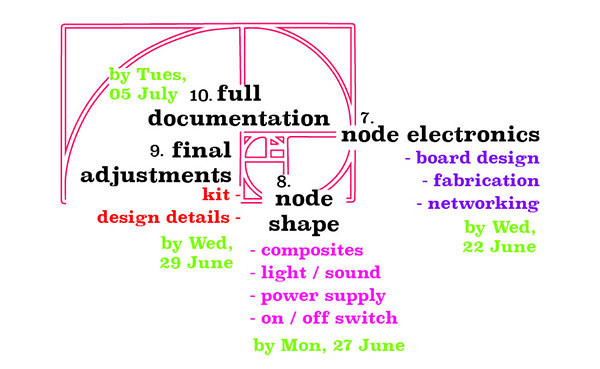
Sketches
Dealing with ideas for how to form a shape for vibration, how the form will work, how to create a system to power and drive all the elements ...
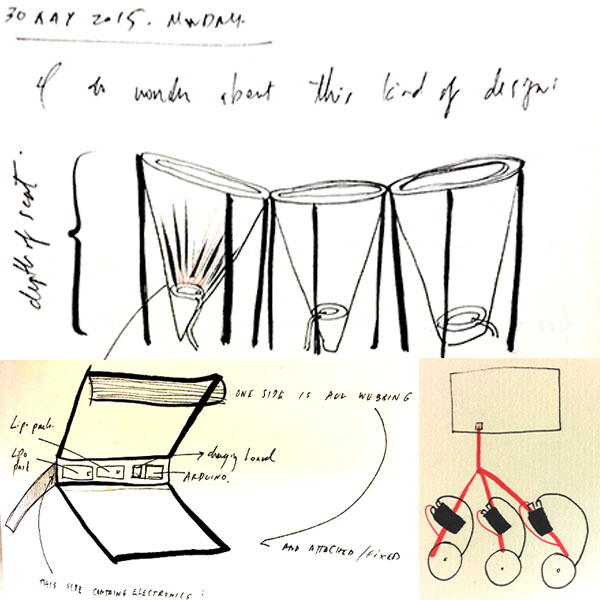
Delineating
- Final Project: the Pillow Alarm.
- How does the final project integrate the topics of the course? (2-d, 3-d, additive, subtractive, designing elec, programming, etc.)
- Project Management. See the timeline above.
- 3-D design. (milling, molding) Creating the seat shape. Creating holders for the vibrating mechanism.
- 2-D design. (laser, vinyl) Wire harness, cloth patterning and cutting.
- Electronics. Circuits to run motors and time the performance of the motors.
- Mechanical design. Creating a matrix to hold small motors for maximum vibration.
- I/O. Input: Time and weight. Output: vibration alarm.
- Networking. If time, the cushion will communicate wirelessly with nodes. The alarm system may communicate with the computer either by wire or wirelessly.
- Interface. This is how the time will be entered: either through buttons or a GUI.
- What will it do?
- The Pillow Alarm tickles your seat and makes you aware that it's time to stand up!
- Who's done what beforehand?
- Vibrating Bracelet using Gemma
- Chair vibrator for gamers, a "Bass Shaker"
- Small vibrating cubes: Companion Cubes
- Darma seat cushion (of which I only became aware b/c of the final presentation, as Neil suggested to me its existence) is pretty neat.
- Similarly, Rompa makes things that vibrate for people with autism ~ though they seem practical to me for an average market, if the marketing style and the finishing were different.
- What materials and components will be required?
- polyurethane foam for casting
- spongy EVA (foam rubber sheets)
- neoprene fabric covering
- 3 motors with eccentric heads
- 3 PLA motor casings
- 9V battery and casing
Table of Sources and Costs, see here.
Addressing Some Questions
- What parts and systems will be made?
- Light and motor array, boards, foam shaping, fabric covering; eccentric part of the eccentric motors.
- What processes will be used?
- See list of processes above for how different aspects of the class are employed.
- What tasks need to be completed?
- fabric casing
- timing code
- What questions need to be answered?
- Most pressing is to put a prototype together and figure out further questions about components and interface.
- What is the schedule?
- How will it be evaluated? (How do you know if you succeeded or failed?)
- My goal is to make something light enough and attractive enough that I want to (a) make space for it in my luggage, and (b) carry it around regularly. Best would be that other people want to touch it and try it because it has a tactile and visual appeal. In this way, the project will have a further life, because it will get tested by use past my time in Fab Academy.
Talks / Planetary Events
Mars' close approach: May 30, 2016
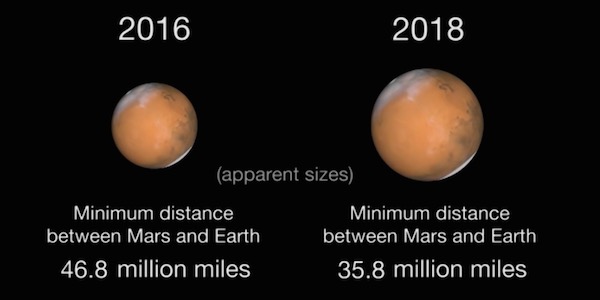
recitation: Sylvia Martinez
She talked about teaching. She affirmed what I've been thinking: the way I learned was all wrong, and it's high time to move on and get into a different style of pedagogy. It feels to me like the world is built from pedagogy, and pedagogy is design. It's an idea I encountered in a memorable article I read at Yale over twenty years ago, called Architecture as Pedagogy, by David W Orr (1993).
Given this, Ms Martinez's slide design was surprising.
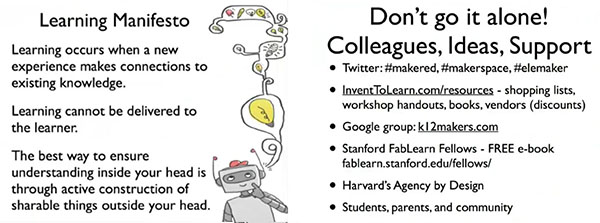
Is the design style a reflection of Midwest aesthetics?
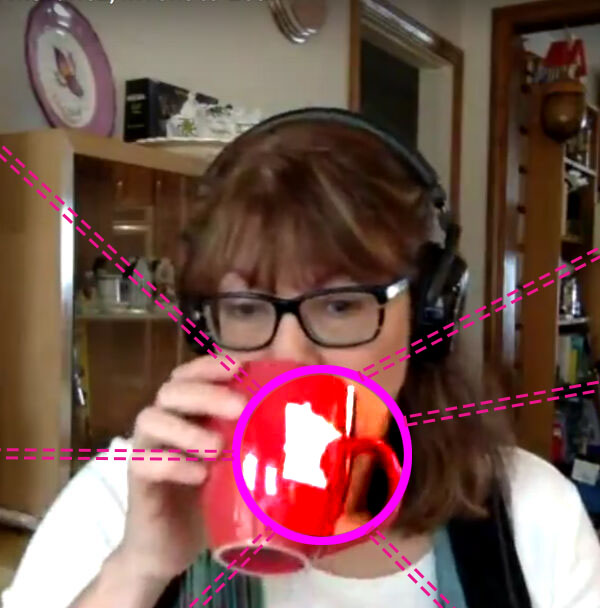
Nevertheless, this was a home run idea:
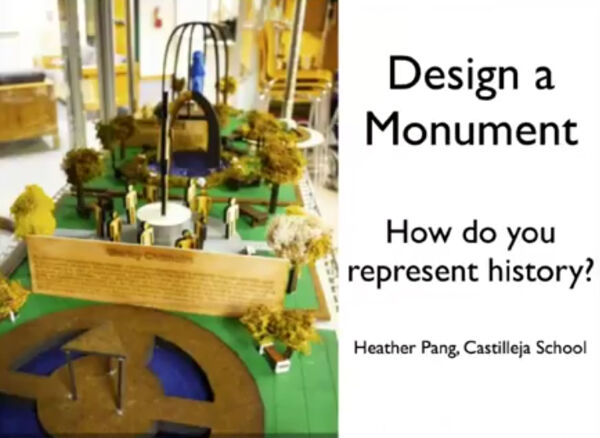
It's teaching history by getting a group to design a monument together. In needing to make decisions together to make something, kids need to discuss what it is meaningful to make.
Then, I was reading earlier this week about some things to help me contextualize what I am doing. I looked at a paper by Seymour Papert and Sherry Turkle (they were married! I didn't know). It was a 1990 paper encouraging computer culture to become more pluralistic ~ it's called "Epistemological Pluralism: Styles and Voices within the Computer Culture." The fact that "the" computer culture sounds funny is an evident indication that the culture has expanded from the monoculture they describe. They talk about a top-down "planner" mentality being dominant, and instead encourage room for a "bricoleur" attitude that is in conversation with machines.
"For planners, mistakes are missteps; for bricoleurs they are the essence of a navigation by mid-course corrections. For planners, a program is an instrument for premeditated control; bricoleurs have goals, but set out to realize them in the spirit of a collaborative venture with the machine. For planners, getting a program to work is like "saying one's piece"; for bricoleurs it is more like a conversation than a monologue."
Martinez offered some nice quotes from Papert:
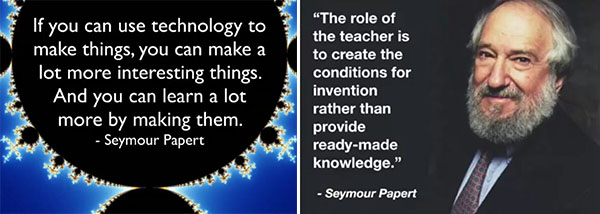
IAAC lecture: Carlo Ratti
I love this guy. I have the feeling he is just curious and exploring ~ in an area where we normally attach a sense of fixity / permanence: architecture. He IS the expo expert, the paragon of the mind of "Expo."
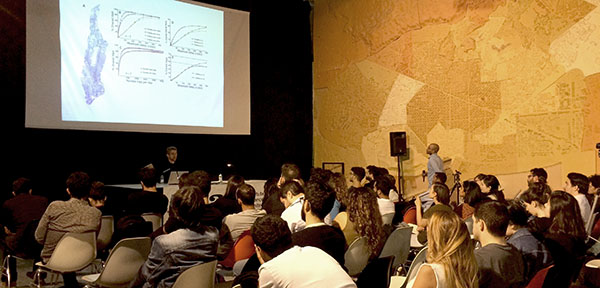
- IDEAS from RATTI's LECTURE:
- Just seeing data changes behavior.
- Mr Palomar and his Louvre of cheeses. (Ha! We do this now in cheese shops / fancy deli counters.)
- Future Food District at Milan Expo, 2015
- "The table is a great interface."
- Kinect lets you see information.
- "Amphitheater of products."
- Self-driving tractor can be specific: eliminates monoculture. Printing at landscape scale. Fuck me. Incredible. Fucking incredible.
- Hacked water pavilion of Saragossa.
- Buildings that respond like biological systems.
- Try out something that shows how the world could be.
- Potential transformations of the present with the decision to take it up made by society.
- Science can propose design solutions.
- These are possible solutions then we get together to decide where to go.
- Re: open source, there are elements that need experts. Open-source creates an open feedback loop. (Hence when something goes viral, great ~ lots of feedback.)
- Open-source is just maximizing impact of an idea.
- Buckminster Fuller: utopia or oblivion.
- How can we change our world? Design gives these possibilities.
- Designers as mutagens.
- Design cannot be an Ivory Tower activity.
- Data creates feedback loops. Interaction on the data becomes a real-time system more and more like the body.
- "In God We Trust; everybody else, bring data." ~ Michael Bloomberg, a plaque in his office while mayor
- Regarding metaphor of human evolution: Mutations are sometimes successful, sometimes left behind. You want a mutation that has an effect. It might show where you do NOT want to go. You want to analyze the effect.
White hacking, not black hacking: showing a vulnerability that needs to be fixed, rather than taking advantage. - The only technology that is meaningful is the technology that changes our lives.
- Timeless elements of architecture. Magic of space, light, interacting w each other.
- Martin Weiss from Royal Obs, in FT ~ how electromagnetic intelligence is more powerful than organic intelligence ~ it has more time to work things out than quickly-degrading organic systems
- Amazon: predictive analytics can eliminate serendipity. Let's encourage serendipity!